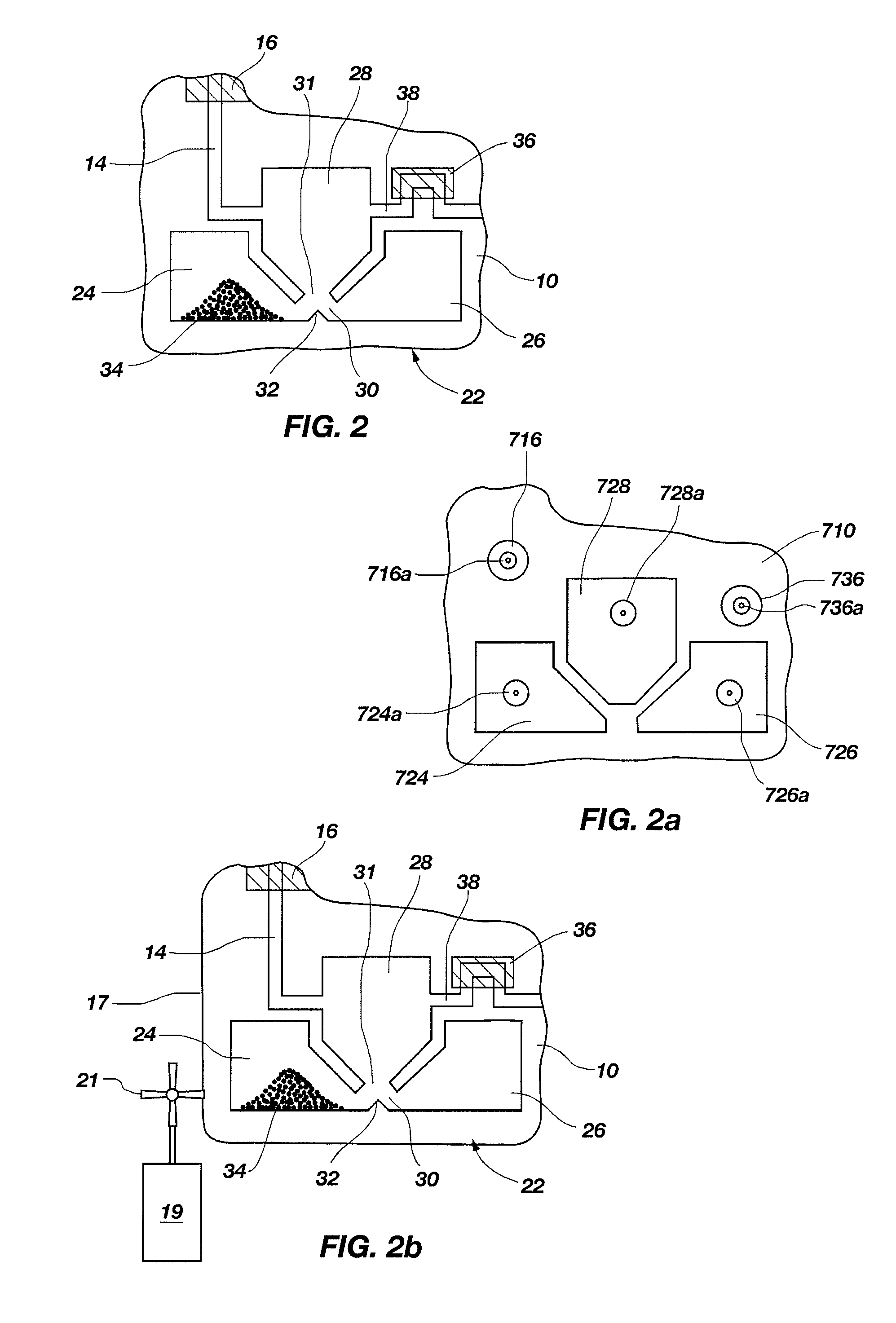Self-contained biological analysis
a biological analysis and self-contained technology, applied in the field of self-contained biological analysis, can solve the problems of affecting the quality of the results, and reducing the accuracy of the results, so as to achieve the effect of robust amplification and minimizing contamination
- Summary
- Abstract
- Description
- Claims
- Application Information
AI Technical Summary
Benefits of technology
Problems solved by technology
Method used
Image
Examples
example 1
Nested Multiplex PCR
[0105]A set of reactions was run in a pouch 110 of FIG. 5, on an instrument similar to instrument 800 but configured for pouch 110. To show cell lysis and effectiveness of the two-stage nucleic acid amplification, 50 μL, each of a live culture of S. cerevisaie and S. pombe at log phase was mixed with 100 μL of a nasopharyngeal aspirate sample from a healthy donor to form the sample, then mixed with 200 μL it lysis buffer (6M guanidine-HCl, 15% TritonX 100, 3M sodium acetate. 300 μL of the 400 μL sample in lysis buffer was then injected into chamber 192a of pouch 110.
[0106]The pouch 110 was manufactured with 0.25 g ZS beads sealed in three-lobed blister 122. Second-stage primers, as discussed below, were also spotted in blisters 181 and 182 during manufacture of pouch 110. The pouch 110 was loaded as follows:[0107]115a sample and lysis buffer, as described above,[0108]115b magnetic beads in the lysis buffer,[0109]115d-e wash buffer (10 mM sodium citrate),[0110]115...
example 2
iPCR
[0142]In another example, the pouches and instruments of the present invention may be used for immuno-PCR (iPCR). iPCR combines the antibody specificity of ELISA with the sensitivity and multiplex capabilities of PCR. While iPCR has been applied to diagnostics and toxin detection, iPCR has not enjoyed widespread commercial application, presumably because PCR template contamination issues are severe in an open ELISA format. Because the pouch format of the present invention provides a sealed environment, the pouches of the present invention may be well suited for iPCR.
[0143]A traditional ELISA detection scheme is shown in FIG. 11 (labeled “ELISA”). In 1992, Cantor and colleagues (Sano, T., et al, Science, 1992. 258(5079): p. 120-2, herein incorporated by reference) described a modification of the basic ELISA technique (FIG. 11, similar to the “Immuno-PCR I” scheme without capture antibody C-Ab), in which the enzyme used for generating a specific signal is replaced by a unique DNA ...
example 3
iPCR with iPCR-Specific Pouch
[0155]The above example illustrates a method adapting the pouch 210 of FIG. 6 for iPCR. However, FIG. 12 shows a pouch 310 that is illustratively configured for iPCR. Fitment 390 is similar to fitments 190 and 290, except having 15 chambers 392 and plungers 368. Each chamber 392 (illustratively chamber 392a, where the sample is injected) may have its own injection port, or several chambers may have a connecting channel and may share an injection port (illustratively 392e through 392k, each containing wash buffer). As with the above-described fitments, any combination of injection ports and channels is within the scope of this invention. Pouch 310 differs from pouch 210 of FIG. 6 in one primary way. As cell lysis is usually not needed in iPCR, the three-lobed blister 222 may be replaced by a single large waste reservoir 322. Because multiple washes are desirable in iPCR, waste reservoir 322 is provided with a sufficiently large volume to retain the multip...
PUM
| Property | Measurement | Unit |
|---|---|---|
| thick | aaaaa | aaaaa |
| operating temperature | aaaaa | aaaaa |
| collision velocity | aaaaa | aaaaa |
Abstract
Description
Claims
Application Information
 Login to View More
Login to View More - R&D
- Intellectual Property
- Life Sciences
- Materials
- Tech Scout
- Unparalleled Data Quality
- Higher Quality Content
- 60% Fewer Hallucinations
Browse by: Latest US Patents, China's latest patents, Technical Efficacy Thesaurus, Application Domain, Technology Topic, Popular Technical Reports.
© 2025 PatSnap. All rights reserved.Legal|Privacy policy|Modern Slavery Act Transparency Statement|Sitemap|About US| Contact US: help@patsnap.com



